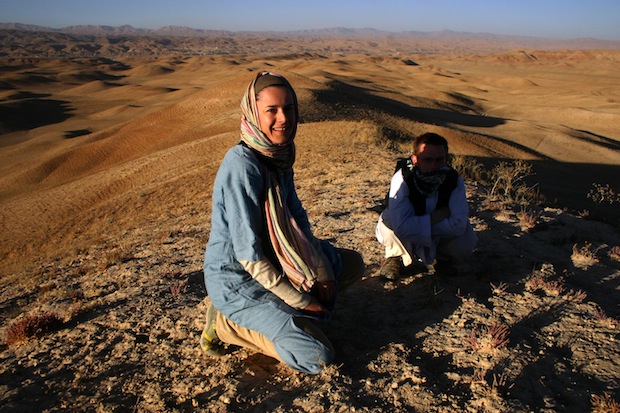 by Marianne Elliott
by Marianne Elliott
When it comes to working with fear, yoga is one of my secret weapons.
Fear is not just a thought or idea. Fear is a neurobiological reaction to perceived threat. This is where modern neuroscience catches up with the wisdom of yoga and meditation.
The autonomic nervous system (i.e. the part you don’t consciously control) is divided into two sections: the sympathetic and the parasympathetic nervous systems.
The sympathetic nervous system acts to mobilize the body’s ‘fight or flight’ response. Over time, repeated stimulation of the sympathetic nervous system without ‘discharge’ can lead to chronic conditions including insomnia, depression and chronic adrenal fatigue.
So it’s important to find ways to discharge the chemicals your body may be producing – by shaking, dancing, running or (it’s true!) sex.
The parasympathetic nervous system – on the other hand – is the ‘rest and digest’ system. It’s responsible for a range of functions that are not controlled by the conscious mind and which take place when the body is at rest, including digestion, salivation, urination and defecation. All those functions are effectively ‘put on hold’ when the sympathetic nervous system is activated in the fight or flight response.
Prolonged stimulation of the sympathetic nervous system, without the balancing effect of the parasympathetic nervous system, causes problems in the body’s functioning. So practices (like yoga) that regulate the sympathetic nervous system are essential to our efforts to work more effectively with fear.
When I was facing the intense emotional and psychological after-effects of trauma from living and working in Afghanistan, I had the good fortune to meet a Sivananda yoga teacher who taught me two simple breathing practices (pranayama).
I credit one of them for saving my sanity, maybe even my life.
The practice is ‘Alternate Nostril Breathing’ and at the time that I learned this practice, and discovered it’s effect on me, I didn’t really understand how it worked at all. But I did notice its effect. Whenever I did the alternate nostril breathing I would feel calmer. My sense of panic would subside, my body would soften and relax and my mind would somehow find a space of ease in the midst of all the craziness of that time.
When I got home from Afghanistan I enrolled to study psychology, mostly because I wanted to better understand trauma and its effects. As part of those studies I did some research on the benefits of yoga for people experiencing any kind of anxiety disorder (including Post Traumatic Stress Disorder, depression and Obsessive Compulsive Disorder).
What I learned didn’t surprise me – in a number of clinical trials yoga had been shown to ease the symptoms of all these conditions.
But which specific yoga practice was most often found to be effective in managing stress and trauma?
Alternate Nostril Breathing.
This practice works on the nervous system, activating the parasympathetic nervous system (which is responsible for our relaxation response) and balancing the sympathetic nervous system (responsible for the flight or fight response), so this simple practice has great benefits for those of us living with the chronic effects of stress or trauma.
And remember, your house need not have been flattened or you don’t need to have had to take your children and flee to a safer city for you to be experiencing heightened flight or fight response. If you have lost your job — or have even recently flipped on the news — you are almost certainly experiencing high levels of stress.
It’s easy to avoid really feeling our fears. It’s in the nature of fears to be scary. Staying in our head and intellectualizing about our fears is one way that we stay disconnected from our fears. It keeps us from ever really understanding our fears and, I believe, from really finding freedom from our fears.
So next time you feel scared, stop for a moment and before you get too caught up in a conversation with your fear, take a moment to notice where you feel this fear in your body.
Go easy on yourself, and perhaps give this simple practice a try.
I do most of the practice sitting cross-legged on the floor (propped up with cushions for my achy hip) but you can do it just as well sitting on a chair if that is more comfortable for you. If it’s possible for you to sit up tall in the chair, so that your spine is long, that is ideal, but if that’s not possible simply do what is possible for you.
Using whichever hand feels most natural to use, place your thumb on one nostril and your ring finger on the other. You will use these digits to alternatively open and close your nostrils. After taking a full breath cycle through bother nostrils, close your right nostril and inhale fully through the left. At the top of the inhale, close the left and open the right to exhale. Inhale again through the right nostril, and then again at the top of the inhale, switch nostrils. Continue for however long feels right, simply switching the nostril you’re breathing through at the top of each inhale. If you feel lightheaded or dizzy, take a few regular breaths through both nostrils as usual.
About Marianne
 Marianne Elliott is a writer, human rights advocate, and yoga teacher.
Marianne Elliott is a writer, human rights advocate, and yoga teacher.
Marianne writes and teaches on creating, developing and sustaining real change in personal life, work and the world.
Trained as a lawyer, Marianne helped develop human rights strategies for the governments of New Zealand and East Timor, was Policy Advisor for Oxfam, and spent two years in the Gaza Strip before going to Afghanistan, where she served in the United Nations. In Afghanistan, she decided stories were her weapon of choice, and yoga was her medicine.
 by
by
Leave a Reply